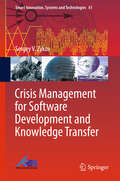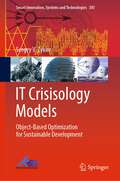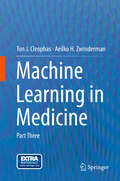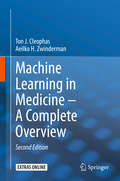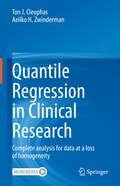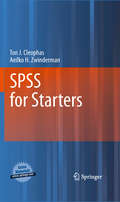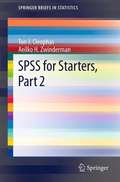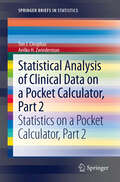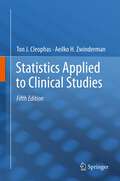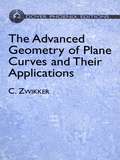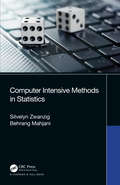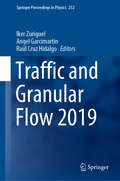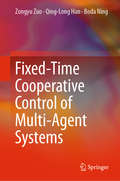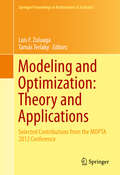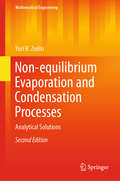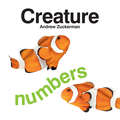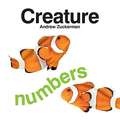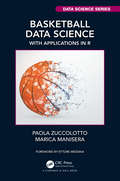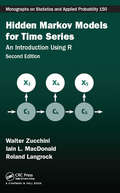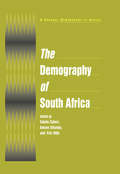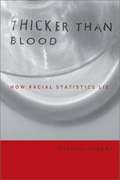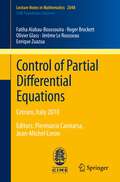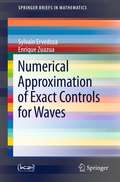- Table View
- List View
Crisis Management for Software Development and Knowledge Transfer (Smart Innovation, Systems and Technologies #61)
by Sergey V. ZykovThis well structured book discusses lifecycle optimization of software projects for crisis management by means of software engineering methods and tools. Its outcomes are based on lessons learned from the software engineering crisis which started in the 1960s. The book presents a systematic approach to overcome the crisis in software engineering depends which not only depends on technology-related but also on human-related factors. It proposes an adaptive methodology for software product development, which optimizes the software product lifecycle in order to avoid "local" crises of software production. The general lifecycle pattern and its stages are discussed, and their impact on the time and budget of the software product development is analyzed. The book identifies key advantages and disadvantages for various models selected and concludes that there is no "silver bullet", or universal model, which suits all software products equally well. It approaches software architecture in terms of process, data and system perspectives and proposes an incremental methodology for crisis-agile development of large-scale, distributed heterogeneous applications. The book introduces a number of specialized approaches which are widely used in industry but are often ignored in general writings because of their vendor-specificity. In doing so, the book builds a helpful bridge from academic conceptions of software engineering to the world of software engineering practice. With its systematic coverage of different software engineering methodologies and the presented rich systems engineering examples the book will be beneficial for a broader audience.
IT Crisisology Models: Object-Based Optimization for Sustainable Development (Smart Innovation, Systems and Technologies #381)
by Sergey V. ZykovThe book focuses on modeling real-world crisis management in digital product development. This includes models and methods for forecasting, responding, and agile engineering/managing for sustainable product development. This book suggests an approach that contains principles, formal models, and semi-formal practice-oriented methods, patterns and techniques to efficiently manage these crises and provide sustainable development. The book also introduces a set of principles, models, and methods for sustainable management as a blend, the components of which have been carefully selected from a few domains adjacent to digital production such as IT-intensive operation, human resource management, and knowledge engineering, to name a few. The key ingredients of this crisis management framework include smart data modeling, trade-off optimizing, agile product controlling, and knowledge transferring.
Machine Learning in Medicine
by Aeilko H. Zwinderman Ton J. CleophasMachine learning is a novel discipline concerned with the analysis of large and multiple variables data. It involves computationally intensive methods, like factor analysis, cluster analysis, and discriminant analysis. It is currently mainly the domain of computer scientists, and is already commonly used in social sciences, marketing research, operational research and applied sciences. It is virtually unused in clinical research. This is probably due to the traditional belief of clinicians in clinical trials where multiple variables are equally balanced by the randomization process and are not further taken into account. In contrast, modern computer data files often involve hundreds of variables like genes and other laboratory values, and computationally intensive methods are required. This book was written as a hand-hold presentation accessible to clinicians, and as a must-read publication for those new to the methods.
Machine Learning in Medicine – A Complete Overview
by Aeilko H. Zwinderman Ton J. CleophasAdequate health and health care is no longer possible without proper data supervision from modern machine learning methodologies like cluster models, neural networks, and other data mining methodologies. The current book is the first publication of a complete overview of machine learning methodologies for the medical and health sector, and it was written as a training companion, and as a must-read, not only for physicians and students, but also for any one involved in the process and progress of health and health care.In this second edition the authors have removed the textual errors from the first edition. Also, the improved tables from the first edition, have been replaced with the original tables from the software programs as applied. This is, because, unlike the former, the latter were without error, and readers were better familiar with them.The main purpose of the first edition was, to provide stepwise analyses of the novel methods from data examples, but background information and clinical relevance information may have been somewhat lacking. Therefore, each chapter now contains a section entitled "Background Information".Machine learning may be more informative, and may provide better sensitivity of testing than traditional analytic methods may do. In the second edition a place has been given for the use of machine learning not only to the analysis of observational clinical data, but also to that of controlled clinical trials.Unlike the first edition, the second edition has drawings in full color providing a helpful extra dimension to the data analysis.Several machine learning methodologies not yet covered in the first edition, but increasingly important today, have been included in this updated edition, for example, negative binomial and Poisson regressions, sparse canonical analysis, Firth's bias adjusted logistic analysis, omics research, eigenvalues and eigenvectors.
Quantile Regression in Clinical Research: Complete analysis for data at a loss of homogeneity
by Aeilko H. Zwinderman Ton J. CleophasQuantile regression is an approach to data at a loss of homogeneity, for example (1) data with outliers, (2) skewed data like corona - deaths data, (3) data with inconstant variability, (4) big data. In clinical research many examples can be given like circadian phenomena, and diseases where spreading may be dependent on subsets with frailty, low weight, low hygiene, and many forms of lack of healthiness. Stratified analyses is the laborious and rather explorative way of analysis, but quantile analysis is a more fruitful, faster and completer alternative for the purpose. Considering all of this, we are on the verge of a revolution in data analysis. The current edition is the first textbook and tutorial of quantile regressions for medical and healthcare students as well as recollection/update bench, and help desk for professionals. Each chapter can be studied as a standalone and covers one of the many fields in the fast growing world of quantile regressions. Step by step analyses of over 20 data files stored at extras.springer.com are included for self-assessment. We should add that the authors are well qualified in their field. Professor Zwinderman is past-president of the International Society of Biostatistics (2012-2015) and Professor Cleophas is past-president of the American College of Angiology(2000-2002). From their expertise they should be able to make adequate selections of modern quantile regression methods for the benefit of physicians, students, and investigators.
SPSS for Starters
by Aeilko H. Zwinderman Ton J. CleophasThis small book contains all statistical tests that are relevant for starters on SPSS. Each test is explained using a data example from clinical practice, including every step in SPSS and the main tables of results with an accompanying text with interpretations of the results and hints convenient for data reporting, i.e., scientific clinical articles and poster presentations.. In order to facilitate the use of this cookbook the data files of the examples are made available by the publisher on the Internet. For investigators who wish to perform their own data analyses from the very start the book can be used as a step-by-step guideline. They can enter their separate data or enter their entire data file, e.g., from Excel, simply by opening an Excel file in SPSS. SPSS statistical software is a user-friendly statistical software with many help and tutor pages. However, for the novices on SPSS an even more basic approach is welcome. The book is meant for this very purpose, and can be used without the help of a teacher. The authors are well-aware that this cookbook contains a minimal amount of text and a maximal technical details, but we believe that this property will not refrain students from mastering the SPSS software systematic, and that, instead, it will even be a help to that aim. Yet, we recommend that it be used together with the textbook "Statistics Applied to Clinical Trials" by Cleophas et al, 4th Edition, 2009, Springer Dordrecht.
SPSS for Starters, Part 2
by Aeilko H. Zwinderman Ton J. CleophasThe first part of this title contained all statistical tests that are relevant for starters on SPSS, and included standard parametric and non-parametric tests for continuous and binary variables, regression methods, trend tests, and reliability and validity assessments of diagnostic tests. The current part 2 of this title reviews multistep methods, multivariate models, assessments of missing data, performance of diagnostic tests, meta-regression, Poisson regression, confounding and interaction, and survival analyses using log tests and segmented time-dependent Cox regression. Methods for assessing non linear models, data seasonality, distribution free methods, including Monte Carlo methods and artificial intelligence, and robust tests are also covered. Each method of testing is explained using a data example from clinical practice,including every step in SPSS, and a text with interpretations of the results and hints convenient for data reporting. In order to facilitate the use of this cookbook the data files of the examples is made available by the editor through extras.springer.com. Both part 1 and 2 of this title contain a minima amount of text and maximal technical details, but we believe that this property will not refrain students from mastering the SPSS software systematics, and that, instead, it will be a help to that aim. Yet, we recommend that it will used together with the textbook "Statistics Applied to Clinical Trials" (5th edition, Springer, Dordrecht 2012) and the e-books "Statistics on a Pocket Calculator Part 1 and 2 (Springer, Dordrecht, 2011 and 2012) from the same authors.
Statistical Analysis of Clinical Data on a Pocket Calculator, Part 2
by Aeilko H. Zwinderman Ton J. CleophasThe first part of this title contained all statistical tests relevant to starting clinical investigations, and included tests for continuous and binary data, power, sample size, multiple testing, variability, confounding, interaction, and reliability. The current part 2 of this title reviews methods for handling missing data, manipulated data, multiple confounders, predictions beyond observation, uncertainty of diagnostic tests, and the problems of outliers. Also robust tests, non-linear modeling , goodness of fit testing, Bhatacharya models, item response modeling, superiority testing, variability testing, binary partitioning for CART (classification and regression tree) methods, meta-analysis, and simple tests for incident analysis and unexpected observations at the workplace and reviewed. Each test method is reported together with (1) a data example from practice, (2) all steps to be taken using a scientific pocket calculator, and (3) the main results and their interpretation. Although several of the described methods can also be carried out with the help of statistical software, the latter procedure will be considerably slower. Both part 1 and 2 of this title consist of a minimum of text and this will enhance the process of mastering the methods. Yet the authors recommend that for a better understanding of the test procedures the books be used together with the same authors' textbook "Statistics Applied to Clinical Studies" 5th edition edited 2012, by Springer Dordrecht Netherlands. More complex data files like data files with multiple treatment modalities or multiple predictor variables can not be analyzed with a pocket calculator. We recommend that the small books "SPSS for starters", Part 1 and 2 (Springer, Dordrecht, 2010, and 2012) from the same authors be used as a complementary help for the readers' benefit.
Statistics Applied to Clinical Studies
by Aeilko H. Zwinderman Ton J. CleophasThanks to the omnipresent computer, current statistics can include data files of many thousands of values, and can perform any exploratory analysis in less than seconds. This development, however fascinating, generally does not lead to simple results. We should not forget that clinical studies are, mostly, for confirming prior hypotheses based on sound arguments, and the simplest tests provide the best power and are adequate for such studies. In the past few years the authors of this 5th edition, as teachers and research supervisors in academic and top-clinical facilities, have been able to closely observe the latest developments in the field of clinical data analysis, and they have been able to assess their performance. In this 5th edition the 47 chapters of the previous edition have been maintained and upgraded according to the current state of the art, and 20 novel chapters have been added after strict selection of the most valuable and promising novel methods. The novel methods are explained using practical examples and step-by-step analyses readily accessible for non-mathematicians. All of the novel chapters have been internationally published by the authors in peer-reviewed journal, including the American Journal of Therapeutics, the European Journal of Clinical Investigation, The International journal of Clinical Pharmacology and therapeutics, and other journals, and permission is granted by all of them to use this material in the current book. We should add that the authors are well-qualified in their fields of knowledge. Professor Zwinderman is president-elect of the International Society of Biostatistics, and Professor Cleophas is past-president of the American College of Angiology. From their expertise they should be able to make adequate selections of modern methods for clinical data analysis for the benefit of physicians, students, and investigators. The authors, although from a different discipline, one clinician and one statistician, have been working and publishing together for over 10 years, and their research of statistical methodology can be characterized as a continued effort to demonstrate that statistics is not mathematics but rather a discipline at the interface of biology and mathematics. They firmly believe that any reader can benefit from this clinical approach to statistical data analysis.
The Advanced Geometry of Plane Curves and Their Applications (Dover Books on Mathematics)
by C. Zwikker"Of chief interest to mathematicians, but physicists and others will be fascinated ... and intrigued by the fruitful use of non-Cartesian methods. Students ... should find the book stimulating." -- British Journal of Applied PhysicsThis study of many important curves, their geometrical properties, and their applications features material not customarily treated in texts on synthetic or analytic Euclidean geometry. Its wide coverage, which includes both algebraic and transcendental curves, extends to unusual properties of familiar curves along with the nature of lesser known curves.Informative discussions of the line, circle, parabola, ellipse, and hyperbola presuppose only the most elementary facts. The less common curves -- cissoid, strophoid, spirals, the leminscate, cycloid, epicycloid, cardioid, and many others -- receive introductions that explain both their basic and advanced properties. Derived curves-the involute, evolute, pedal curve, envelope, and orthogonal trajectories-are also examined, with definitions of their important applications. These range through the fields of optics, electric circuit design, hydraulics, hydrodynamics, classical mechanics, electromagnetism, crystallography, gear design, road engineering, orbits of subatomic particles, and similar areas in physics and engineering. The author represents the points of the curves by complex numbers, rather than the real Cartesian coordinates, an approach that permits simple, direct, and elegant proofs.
Computer Intensive Methods in Statistics
by Silvelyn Zwanzig Behrang MahjaniThis textbook gives an overview of statistical methods that have been developed during the last years due to increasing computer use, including random number generators, Monte Carlo methods, Markov Chain Monte Carlo (MCMC) methods, Bootstrap, EM algorithms, SIMEX, variable selection, density estimators, kernel estimators, orthogonal and local polynomial estimators, wavelet estimators, splines, and model assessment. Computer Intensive Methods in Statistics is written for students at graduate level, but can also be used by practitioners. Features Presents the main ideas of computer-intensive statistical methods Gives the algorithms for all the methods Uses various plots and illustrations for explaining the main ideas Features the theoretical backgrounds of the main methods. Includes R codes for the methods and examples Silvelyn Zwanzig is an Associate Professor for Mathematical Statistics at Uppsala University. She studied Mathematics at the Humboldt- University in Berlin. Before coming to Sweden, she was Assistant Professor at the University of Hamburg in Germany. She received her Ph.D. in Mathematics at the Academy of Sciences of the GDR. Since 1991, she has taught Statistics for undergraduate and graduate students. Her research interests have moved from theoretical statistics to computer intensive statistics. Behrang Mahjani is a postdoctoral fellow with a Ph.D. in Scientific Computing with a focus on Computational Statistics, from Uppsala University, Sweden. He joined the Seaver Autism Center for Research and Treatment at the Icahn School of Medicine at Mount Sinai, New York, in September 2017 and was formerly a postdoctoral fellow at the Karolinska Institutet, Stockholm, Sweden. His research is focused on solving large-scale problems through statistical and computational methods.
Der Zehnerübergang zur Anbahnung eines Stellenwertverständnisses: Eine Entwicklungsforschungsstudie mit Blick auf den Förderschwerpunkt Hören und Kommunikation (Kölner Beiträge zur Didaktik der Mathematik)
by Anna-Katharina ZurniedenAus Perspektive der Mathematikdidaktik stellt das Stellenwertsystem im Lernprozess häufig eine Hürde dar, der möglichst frühzeitig begegnet werden sollte. Gleichzeitig scheint eine Hörschädigung den mathematischen Lernprozess negativ zu beeinflussen. Im Rahmen dieser Forschungsarbeit werden zum einen Design-Prinzipien sowie ein Lehr-Lernarrangement zum Zehnerübergang entwickelt, die eine Möglichkeit der frühzeitigen Anbahnung eines Stellenwertverständnisses (speziell mit Blick auf den Förderschwerpunkt Hören und Kommunikation) darstellen. Hierbei wird bewusst eine von gängigen Erarbeitungen abweichende Übergänge fokussierende Herangehensweise gewählt, die jedoch als Ergänzung zu verstehen ist und zudem im Hinblick auf den weiteren Verlauf der Lehr- und Lernprozesse anschlussfähig ist. Zum anderen werden lokale Theorien zu Lehr- und Lernprozessen am Zehnerübergang generiert. Somit bietet die Arbeit erste Einsichten zu möglichen Hürden sowie Anhaltspunkte für Hilfestellungen und Strategien zum Umgang mit Herausforderungen, insbesondere im Kontext des Förderschwerpunkts Hören und Kommunikation.
Traffic and Granular Flow 2019 (Springer Proceedings in Physics #252)
by Iker Zuriguel Angel Garcimartín Raúl Cruz HidalgoThis book gathers contributions on a variety of flowing collective systems. While primarily focusing on pedestrian dynamics, they also reflect the latest developments in areas such as vehicular traffic and granular flows and address related emerging topics such as self-propelled particles, data transport, swarm behavior, intercellular transport, and collective dynamics of biological systems. Combining fundamental research and practical applications in the various fields discussed, the book offers a valuable asset for researchers and practitioners alike.
Fixed-Time Cooperative Control of Multi-Agent Systems
by Zongyu Zuo Qing-Long Han Boda NingThis monograph presents new theories and methods for fixed-time cooperative control of multi-agent systems. Fundamental concepts of fixed-time stability and stabilization are introduced with insightful understanding. This book presents solutions for several problems of fixed-time cooperative control using systematic design methods. The book compares fixed-time cooperative control with asymptotic cooperative control, demonstrating how the former can achieve better closed-loop performance and disturbance rejection properties. It also discusses the differences from finite-time control, and shows how fixed-time cooperative control can produce the faster rate of convergence and provide an explicit estimate of the settling time independent of initial conditions. This monograph presents multiple applications of fixed-time control schemes, including to distributed optimization of multi-agent systems, making it useful to students, researchers and engineers alike.
Modeling and Optimization: Theory and Applications
by Luis F. Zuluaga Tamás TerlakyThis volume contains a selection of contributions that were presented at the Modeling and Optimization: Theory and Applications Conference (MOPTA) held at Lehigh University in Bethlehem, Pennsylvania, USA on July 30-August 1, 2012. The conference brought together a diverse group of researchers and practitioners, working on both theoretical and practical aspects of continuous or discrete optimization. Topics presented included algorithms for solving convex, network, mixed-integer, nonlinear, and global optimization problems, and addressed the application of optimization techniques in finance, logistics, health, and other important fields. The contributions contained in this volume represent a sample of these topics and applications and illustrate the broad diversity of ideas discussed at the meeting.
Non-equilibrium Evaporation and Condensation Processes: Analytical Solutions (Mathematical Engineering)
by Yuri B. ZudinThis monograph is focused mostly on the exposition of analytical methods for the solution of problems of strong phase change. A new theoretical model is proved useful in describing, with acceptable accuracy, problems of strong evaporation and condensation. The book is the first to treat the problem of asymmetry for evaporation/condensation. A semi-empirical model for the process is proposed for purposes of practical calculation of the process of strong evaporation. The “limiting schemes” of the vapor bubble growth are analyzed. The thermo-hydrodynamic problem of evaporating meniscus of a thin liquid film on a heated surface is considered. A theoretical analysis of the problem of evaporation of a drop levitating over a vapor cushion is performed. The problem of vapor condensation upon a transversal flow around a horizontal cylinder is considered. The second edition is extended by (i) the conjugate “strong evaporation - heat conduction” problem, (ii) the influence of accommodation coefficients on intensive processes of evaporation and condensation, (iii) the problem of supersonic condensation. This book is the first to present a comprehensive theoretical approach of boiling problems: nucleate boiling, superfluid helium phase transition, similarity between pseudo-boiling and subcritical pressure nucleate boiling. The target audience primarily comprises research experts in the field of thermodynamics and fluid dynamics, but the book may also be beneficial for graduate students.
Creature Numbers
by Andrew ZuckermanLearn the rainbow with red snakes, orange fish, and yellow birds. Learn to count as two scorpions fight, four penguins waddle, and nine ants work. Andrew Zuckerman's vivid pictures of fascinating animals from around the world will enthrall young readers and teach basic colors and numbers in a celebration of nature in two books that bring the wildly successful photographer's work to a whole new audience. The up-close and personal photos of everyone's favorite animals make these board books perfect educational tools for any child, and stunning works of art for animal lovers of all ages.
Creature Numbers
by Andrew ZuckermanLearn the rainbow with red snakes, orange fish, and yellow birds. Learn to count as two scorpions fight, four penguins waddle, and nine ants work. Andrew Zuckerman's vivid pictures of fascinating animals from around the world will enthrall young readers and teach basic colors and numbers in a celebration of nature in two books that bring the wildly successful photographer's work to a whole new audience. The up-close and personal photos of everyone's favorite animals make these board books perfect educational tools for any child, and stunning works of art for animal lovers of all ages.
Basketball Data Science: With Applications in R (Chapman & Hall/CRC Data Science Series)
by Paola Zuccolotto Marica ManiseraUsing data from one season of NBA games, Basketball Data Science: With Applications in R is the perfect book for anyone interested in learning and applying data analytics in basketball. Whether assessing the spatial performance of an MBA player&’s shots or doing an analysis of the impact of high pressure game situations on the probability of scoring, this book discusses a variety of case studies and hands-on examples using a custom R package. The codes are supplied so readers can reproduce the analyses themselves or create their own. Assuming a basic statistical knowledge, Basketball Data Science with R is suitable for students, technicians, coaches, data analysts and applied researchers. Features: · One of the first books to provide statistical and data mining methods for the growing field of analytics in basketball. · Presents tools for modelling graphs and figures to visualize the data. · Includes real world case studies and examples, such as estimations of scoring probability using the Golden State Warriors as a test case. · Provides the source code and data so readers can do their own analyses on NBA teams and players.
Hidden Markov Models for Time Series: An Introduction Using R, Second Edition (Chapman & Hall/CRC Monographs on Statistics and Applied Probability)
by Walter Zucchini Iain L. MacDonald Roland LangrockHidden Markov Models for Time Series: An Introduction Using R, Second Edition illustrates the great flexibility of hidden Markov models (HMMs) as general-purpose models for time series data. The book provides a broad understanding of the models and their uses. After presenting the basic model formulation, the book covers estimation, forecasting, decoding, prediction, model selection, and Bayesian inference for HMMs. Through examples and applications, the authors describe how to extend and generalize the basic model so that it can be applied in a rich variety of situations. The book demonstrates how HMMs can be applied to a wide range of types of time series: continuous-valued, circular, multivariate, binary, bounded and unbounded counts, and categorical observations. It also discusses how to employ the freely available computing environment R to carry out the computations. Features Presents an accessible overview of HMMs Explores a variety of applications in ecology, finance, epidemiology, climatology, and sociology Includes numerous theoretical and programming exercises Provides most of the analysed data sets online New to the second edition A total of five chapters on extensions, including HMMs for longitudinal data, hidden semi-Markov models and models with continuous-valued state process New case studies on animal movement, rainfall occurrence and capture-recapture data
The Demography of South Africa (A\general Demography Of Africa Ser.)
by Tukufu Zuberi Amson Sibanda Eric O. UdjoThis groundbreaking study of South Africa provides a unique look at the interplay of demographic, social and economic processes in a society undergoing rapid change as a result of the collapse of apartheid. It uses data from the first post-apartheid census as the basis for analysis of fertility, mortality within the context of HIV/AIDS, migration, education, employment, and household structure. These census data are complemented by large-scale household surveys and data from a partial registration system to study the relationships among various demographic, economic, and social phenomena. For the first time the demographic consequences of both the longer-term impact of apartheid policies and the policies of the new South Africa are examined and compared. This comprehensive reference links the demographic behavior of South Africa's various population groups to social, economic, and political inequalities created by policies of separate and unequal development. Prepared under the auspices of the Population Studies Center at the University of Pennsylvania, it is an essential resource for all scholars and practitioners in the field.
Thicker Than Blood: How Racial Statistics Lie
by Tukufu ZuberiTukufu Zuberi offers a concise account of the historical connections between the development of the idea of race and the birth of social statistics. Zuberi describes the ways race-differentiated data is misinterpreted in the social sciences and asks searching questions about the ways racial statistics are used. He argues that statistical analysis can and must be deracialized, and that this deracialization is essential to the goal of achieving social justice for all.
Electromagnetic Fields and Waves in Fractional Dimensional Space
by Muhammad Zubair Qaisar Abbas Naqvi Muhammad Junaid MughalThis book presents the concept of fractional dimensional space applied to the use of electromagnetic fields and waves. It provides demonstrates the advantages in studying the behavior of electromagnetic fields and waves in fractal media. The book presents novel fractional space generalization of the differential electromagnetic equations is provided as well as a new form of vector differential operators is formulated in fractional space. Using these modified vector differential operators, the classical Maxwell's electromagnetic equations are worked out. The Laplace's, Poisson's and Helmholtz's equations in fractional space are derived by using modified vector differential operators.
Control of Partial Differential Equations: Cetraro, Italy 2010, Editors: Piermarco Cannarsa, Jean-Michel Coron (Lecture Notes in Mathematics #2048)
by Enrique Zuazua Jérôme Le Rousseau Roger Brockett Olivier Glass Jean-Michel Coron Fatiha Alabau-Boussouira Piermarco CannarsaThe term "control theory" refers to the body of results - theoretical, numerical and algorithmic - which have been developed to influence the evolution of the state of a given system in order to meet a prescribed performance criterion. Systems of interest to control theory may be of very different natures. This monograph is concerned with models that can be described by partial differential equations of evolution. It contains five major contributions and is connected to the CIME Course on Control of Partial Differential Equations that took place in Cetraro (CS, Italy), July 19 - 23, 2010. Specifically, it covers the stabilization of evolution equations, control of the Liouville equation, control in fluid mechanics, control and numerics for the wave equation, and Carleman estimates for elliptic and parabolic equations with application to control. We are confident this work will provide an authoritative reference work for all scientists who are interested in this field, representing at the same time a friendly introduction to, and an updated account of, some of the most active trends in current research.
Numerical Approximation of Exact Controls for Waves
by Enrique Zuazua Sylvain ErvedozaThis book is devoted to fully developing and comparing the two main approaches to the numerical approximation of controls for wave propagation phenomena: the continuous and the discrete. This is accomplished in the abstract functional setting of conservative semigroups.The main results of the work unify, to a large extent, these two approaches, which yield similaralgorithms and convergence rates. The discrete approach, however, gives not only efficient numerical approximations of the continuous controls, but also ensures some partial controllability properties of the finite-dimensional approximated dynamics. Moreover, it has the advantage of leading to iterative approximation processes that converge without a limiting threshold in the number of iterations. Such a threshold, which is hard to compute and estimate in practice, is a drawback of the methods emanating from the continuous approach. To complement this theory, the book provides convergence results for the discrete wave equation when discretized using finite differences and proves the convergence of the discrete wave equation with non-homogeneous Dirichlet conditions. The first book to explore these topics in depth, "On the Numerical Approximations of Controls for Waves" has rich applications to data assimilation problems and will be of interest to researchers who deal with wave approximations.
